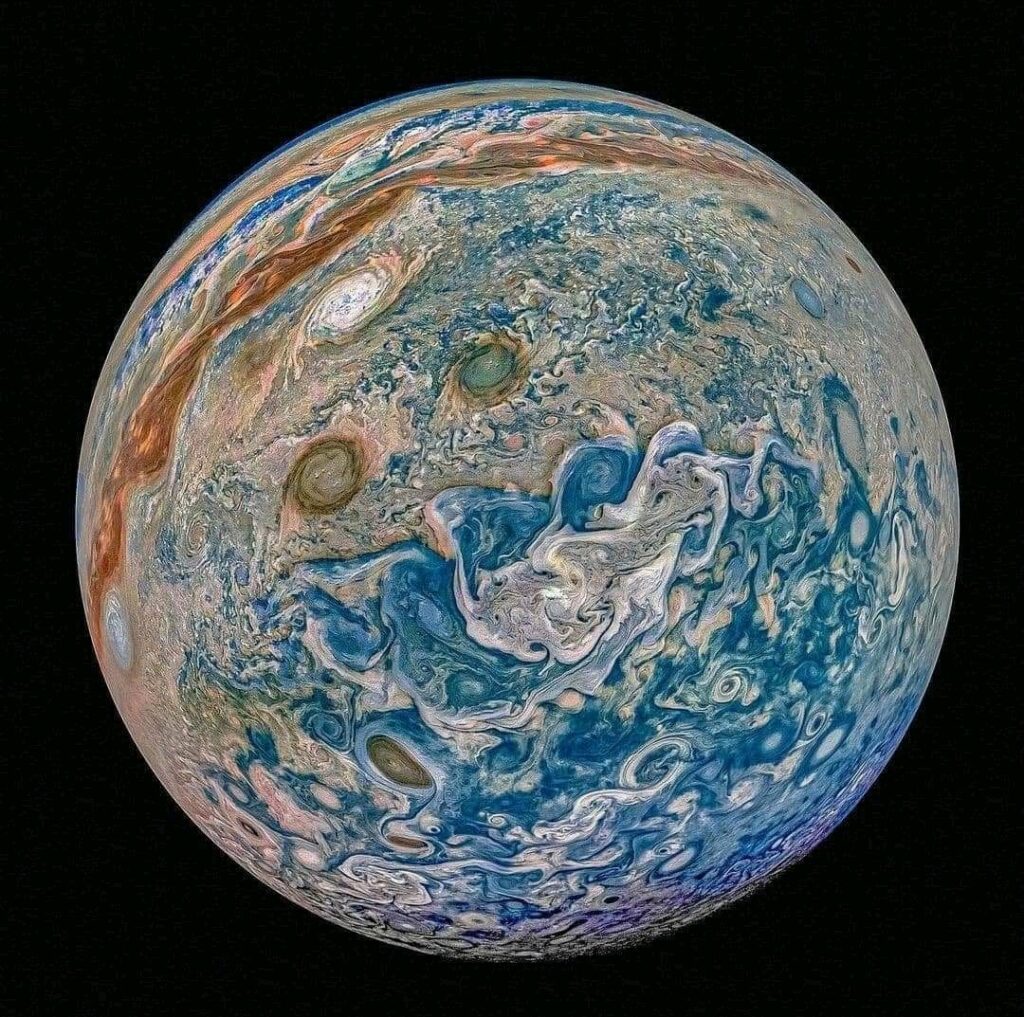NASA’s Juno spacecraft has sent back some of the clearest and closest images of Jupiter ever captured. These new images, released in early April 2025, show the planet’s swirling clouds and giant storms in stunning detail. The images were taken during recent flybys, where Juno came within just 2,000 miles (about 3,200 kilometers) of the gas giant’s cloud tops. This close approach, combined with camera upgrades, has given scientists and the public an incredible view of our solar system’s largest planet.
A Closer Look at Jupiter Than Ever Before
NASA launched the Juno spacecraft in 2011. It reached Jupiter in 2016 after a five-year journey. Since then, Juno has orbited the planet more than 60 times. Its mission is to study Jupiter’s structure, atmosphere, and magnetic field.
These latest images are part of Juno’s extended mission. The probe’s camera, JunoCam, received software upgrades that allow for better image processing. These changes, along with recent close passes, helped Juno take pictures with unmatched clarity.
One image shows the Great Red Spot—a massive storm larger than Earth—in sharp detail. Another captures Jupiter’s polar cyclones, which are spinning weather systems at the planet’s north and south poles. Some images even allow scientists to create 3D models of Jupiter’s cloud layers.
What Makes These Images Special?
Crystal-Clear Detail
Juno’s newest images show Jupiter’s clouds with stunning clarity. The bands of color across the planet are easy to see. These stripes are made of gases that move in opposite directions. The pictures also show dark spots—areas where the atmosphere behaves in strange ways.
New Angles and Closer Flybys
Juno is now flying much closer to Jupiter than before. It passes as close as 2,000 miles above the planet’s clouds. This distance is short in space terms, and it allows for high-resolution photos.
3D Atmospheric Models
Some of the new images were used to make 3D models. These models help scientists understand how deep the storms go. They also show how the winds move in layers.
Why These Images Matter
These aren’t just beautiful pictures. They help scientists answer big questions. With the new images, researchers can:
-
Study how Jupiter was formed billions of years ago
-
Understand how gas giant weather systems work
-
Learn what lies deep inside the planet
-
Compare Jupiter with other planets like Saturn and even Earth
The data also helps scientists prepare for future missions. For example, NASA’s upcoming Europa Clipper mission will explore one of Jupiter’s moons. The new insights from Juno help scientists understand the environment that Europa orbits in.
Public Excitement and Global Impact
People around the world are thrilled by these new images. Social media is full of posts sharing the beauty of Jupiter. Schools and science centers are using the photos to teach kids about space.
NASA has also released these images to the public for free. Anyone can download them from the agency’s official website. This openness helps fuel interest in space science. When people see what Juno sees, they become more curious about the universe.
Fun Facts About Juno
-
Juno travels at over 130,000 miles per hour—faster than a speeding bullet.
-
Its orbits are wide and take about 53 days to complete.
-
Juno is powered by solar energy, even though it’s so far from the Sun.
-
The spacecraft’s name comes from Roman mythology. Juno was the goddess who could see through clouds—just like the probe does now.
What’s Next for Juno?
NASA has extended Juno’s mission until at least September 2025. During this time, the spacecraft will continue to fly over Jupiter’s poles and get close to some of its moons. Scientists hope to collect more data and capture more images.
Juno will pass by Io, one of Jupiter’s most active moons, later this year. Io has hundreds of volcanoes and may hold clues to how moons interact with gas giants.
NASA’s Juno mission continues to inspire with each new discovery. The latest images of Jupiter are more than just amazing—they are tools that help unlock the mysteries of our solar system. They show how far technology and human curiosity have come.
Whether you’re a scientist or a space fan, these new views of Jupiter remind us how much there is still to explore.


